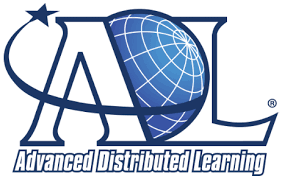Eps 13: Advanced Distributed Learning Standards -eLearning standards: SCORM and xAPI
| Host image: | StyleGAN neural net |
|---|---|
| Content creation: | GPT-3.5, |
Host

Adrian Bailey
Podcast Content
-
It is an advanced distributed learning standard that allows for the exchange of data between most learning technologies. This means that online learning content can be created to meet the standards’ technical specifications and then easily shared between different learning management systems, platforms, and initiatives. The ADL Initiative is an effort of the US Department of Defense that develops e-learning standards to allow courses to be developed and shared across multiple platforms, such as SCORM or Experience API.
By packaging e-learning content, ADL’s standards enable the easy sharing of digital courses between Learning Management Systems . The most widely recognized set of e-learning standards is SCORM, which stands for Sharable Content Object Reference Model. This reference model provides a framework for creating and delivering digital courses to be shared across multiple platforms. The SCORM standard has been so successful that it has been adopted by the US Department of Defense as the de facto standard for all its e-learning content. However, in recent years, the ADL Initiative has begun to develop an alternative to SCORM called Tin Can API .
This open-source eLearning standard is designed to capture learner data from a variety of environments using Learning Record Stores. It enables content creators and courses to collect data from real-world learning activities that do not necessarily fit into the structure of SCORM. The Tin Can API enables learning architectures to collect and store the data in a Learning Record Store which can be used by ADLs to understand how learners are interacting with their course materials. The ADL Initiative has also developed an additional standard called xAPI, which is designed to extend the functionality of Tin Can API.
XAPI allows for the interactivity of digital learning content, software, and platforms for a more engaging learning experience. This enables you to experience different learning interventions and packages from multiple providers. Scorm is still the primary standard used by many Learning Management Systems and Learning Experience Platforms , but xAPI provides a standardized way to track learner experiences that is not limited to what Scorm offers. In addition, xAPI also has the ability to record your experiences with data rules that are specific to each provider.
This means that the same data can be shared across different platforms and providers. With this feature, organizations can ensure interoperability between their e-learning platforms, while also providing a standard way to store and transmit learning data. It is a leading framework in the world of SCORM and it clarifies available documentation to meet requirements of today's modern learning world. xAPI is an industry standard for supporting interoperability between learning resources in IoT environments, allowing for both simple and complex arrangements.
ADLS provides a common training and learning architecture that is used to create, distribute, and maintain training content. Using xAPI, the ADLS defines how an LMS can launch and track content within the SCORM base level. As an open standard, it answers the challenge of launching content from multiple sources in a consistent way. Just as SCORM is one component of ADLS, so is xAPI.
xAPI is an open source learning standard that allows for the tracking and recording of learning activity. This standard also allows for content to reside in different locations, as opposed to SCORM which requires all content to reside in the same domain. With xAPI, content can be hosted wherever it is most convenient for the content creator or host and then accessed by learners without such restrictions. The xAPI works hand-in-hand with SCORM to offer a seamless learning experience, as well as offer compliant content standard that can be used across multiple platforms and systems.
Through the xAPI, learners are able to experience content that is shareable and can be easily accessed from any device. Data can be collected and stored, as well as exchanged between different platforms and tools. The SCORM standards provide a way for data elements to be defined and data models to be created in order to deliver a more consistent learning experience.
It also allows for course designers to build e-learning modules and package them up in a way that can be accessed by users. XAPI is the next generation of the SCORM standard, allowing for the interoperability of data between systems, as well as being able to access and track a user’s progress through an e-learning module. Both standards are supported by many Learning Management Systems so that they can be launched from within the LMS itself.
Advanced Distributed Learning Standards are the most widely used eLearning standards. They have been created to set a common model for delivering SCORM content and providing interoperability between course authoring softwares. SCORM courses can become conformant with a SCORM-compliant LMS and its authoring functionality. XAPI is also known as Tin Can API, it was developed to provide more detailed data than SCORM can offer. It is now used by many large organisations, such as the US Department of Defence's Advanced Distributed Learning Initiative, to create a set of standards that can be used in multiple systems using the same version of the software.
The selection of the right content standard is extremely important for successful eLearning development and delivery. Content compliance requirements should be considered when selecting the most popular content standards. SCORM and xAPI are two of the most popular content standards used for developing eLearning content, as they both provide a means of creating sharable content objects that can be used across multiple Learning Management Systems . xAPI and SCORM are the two main standards used to evaluate and share eLearning content. xAPI was developed by a training committee in order to create an object reference model that would support a variety of training courses.
It provides a common API that can be integrated into most existing learning platforms. xAPI is considered to be the next generation of SCORM, allowing for modern learning applications requiring internal code to be launched. The underlying structure of xAPI is called the TinCan engine and it supports a number of different requirements in order to keep track of learning content on any platform.
